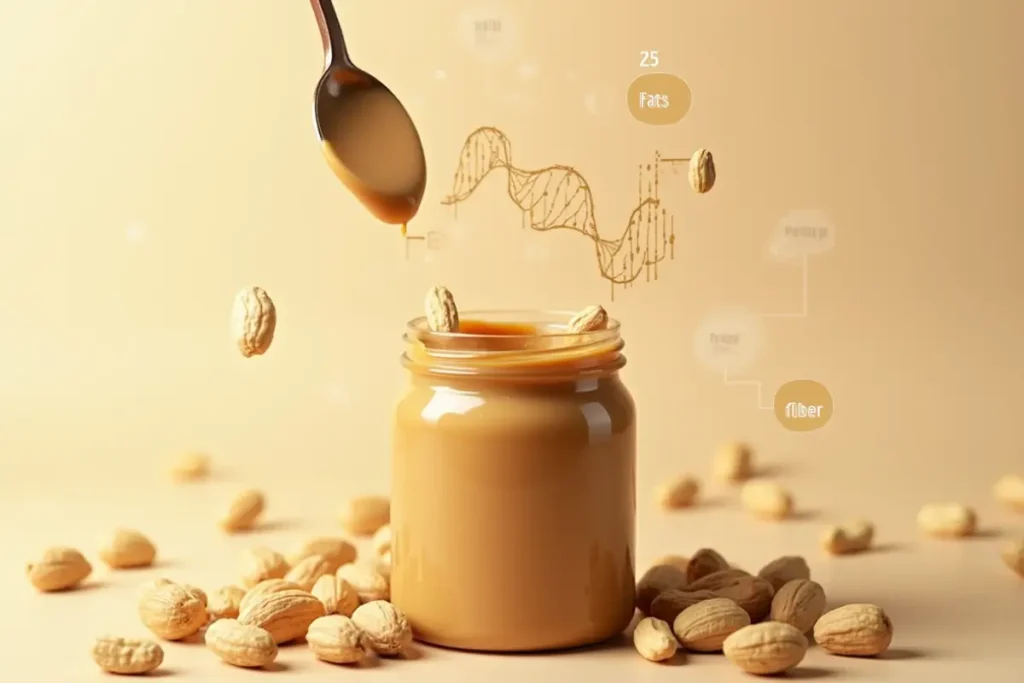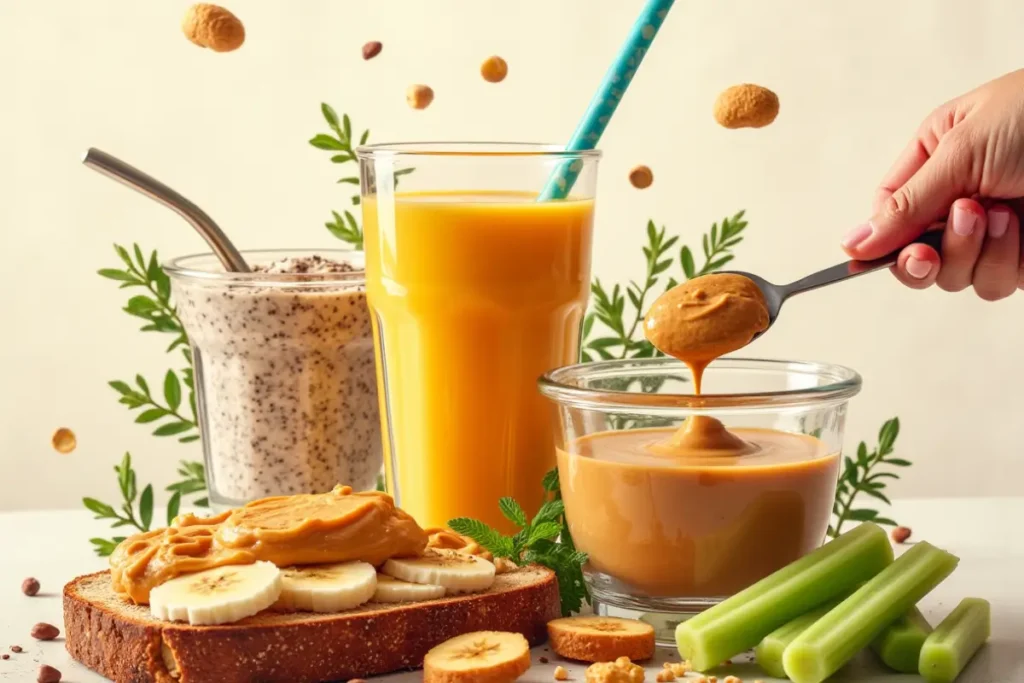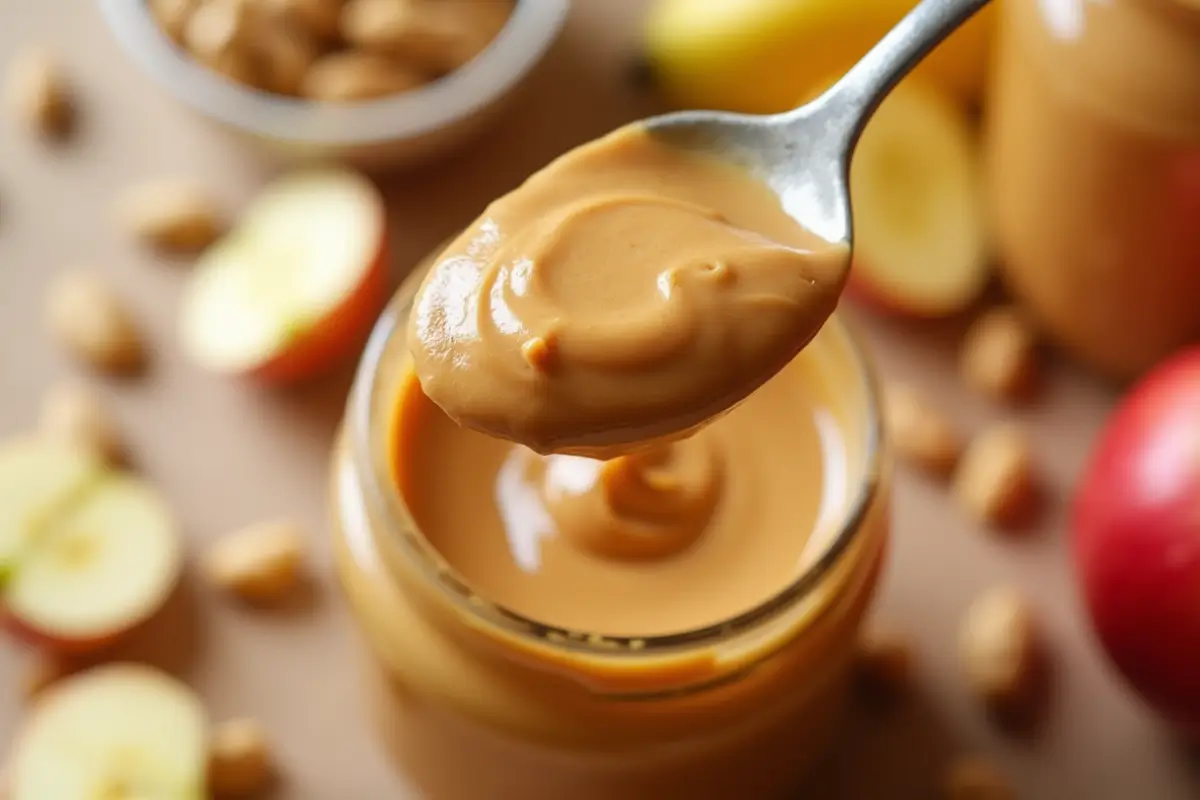Have you ever found yourself reaching for that jar of creamy, smooth peanut butter, feeling a wave of comfort and satisfaction wash over you? Whether you’re someone who loves a good workout, a parent always on the go, or even just a plain peanut butter enthusiast, that simple spoonful likely brings up a question: Is it really helping you with your protein needs, or is it just a delightful treat? Therefore, let’s explore this topic together, cutting through the confusion to understand the real deal.
Understanding Protein Basics
Before we dive deep into the world of peanut butter, it’s important to first touch on why protein is such a big deal for your body. Protein is a fundamental building block, essential for a whole host of functions. Think of it like the construction crew of your body. Indeed, it’s not just about building muscles (though it does that incredibly well), but rather about repairing tissues, producing enzymes that help with digestion, and also creating hormones that regulate various bodily functions. Without enough protein, you might find yourself feeling sluggish, struggling with muscle recovery, and subsequently not at your best.
Complete vs. Incomplete Proteins
Now, it’s worth remembering that not all proteins are created equal. We often hear about ‘complete’ and ‘incomplete’ proteins. Complete proteins, for instance, are usually found in animal products like chicken, eggs, and dairy; these contain all nine essential amino acids that your body can’t make on its own. These are the building blocks that are essential for your overall health. Incomplete proteins, on the other hand, are typically found in plant sources and might be missing one or more of these crucial amino acids. This is important to know because peanut butter, while indeed packing a good amount of protein, falls into the incomplete category, meaning it might not contain all nine essential amino acids.
Therefore, it’s crucial to acknowledge that what you take into your body has a direct impact on how you feel and function. Understanding these fundamental concepts about protein is a first step towards optimizing your health. Reputable sources, such as the World Health Organization (WHO) and the National Institutes of Health (NIH), can furthermore provide in-depth information and recommendations on daily protein needs, tailored to various lifestyles and activities. These institutions are excellent resources if you’re looking to delve even deeper into the nutritional details.
Peanut Butter: A Nutritional Profile Deep Dive

Nutrient Breakdown
Now then, let’s get down to the specifics of peanut butter. You know it’s delicious, but also what exactly are you putting into your body with each spoonful? At its core, peanut butter is composed of three macronutrients: fats, protein, and carbohydrates. What you may not realize, however, is that a significant portion of peanut butter’s composition is made up of fats. Nevertheless, it’s not the kind of fat that should give you cause for concern. The majority of these fats are unsaturated, considered the “good” type of fats that can support heart health when consumed in moderation.
Furthermore, beyond fats, you’ll also find a decent helping of protein, which, as we already discussed, is crucial for various bodily functions. In addition to that, yes, there are some carbohydrates in peanut butter, though they often take a back seat to the other two macronutrients. It’s also important to note the presence of fiber in peanut butter. Fiber plays an essential role in aiding digestion, keeping you feeling full and satisfied for longer. Thus, when you enjoy that tasty spread, you’re getting more than just a delicious treat; you’re taking in a combination of nutrients that can contribute to your overall well-being.
Understanding Macronutrients
- Key Point: Brief recap on the roles of fats, protein and carbs in the body
- Key Point: Emphasis the importance of balance in macronutrients intake
Peanut Butter Protein Content: How Does it Stack Up?
So then, how much protein are you really getting from your peanut butter? Well, generally, a typical tablespoon of peanut butter contains around 3.5 to 4 grams of protein. A two-tablespoon serving, which many of us might consider a standard amount, delivers about 7 to 8 grams of protein. Now, admittedly, this amount isn’t insignificant, especially if you’re looking to add extra protein to your daily intake. But then how does that stack up against other protein sources?
For instance, consider this: a single large egg contains about 6 grams of protein, 3 ounces of cooked chicken breast offer around 26 grams, and a cup of cooked lentils provides around 18 grams. These numbers give you some perspective. While peanut butter can be a good source of plant-based protein, it’s not as protein-dense as these other options. Keep in mind that your body processes different types of protein in unique ways, and additionally these comparisons serve as a guide. The type of protein and its source also contribute to its overall health benefits, so it’s crucial to consider these aspects when incorporating proteins into your diet.
When we talk about peanut butter, we are dealing with a plant-based protein source. It’s derived from peanuts, which are in reality legumes, making it a good option for those who follow a plant-focused diet.
The Quality of Peanut Butter Protein
Now, here’s where things get interesting. While peanut butter does offer a notable amount of protein, it’s essential to understand that it doesn’t contain all the necessary building blocks of protein in the right quantities. The essential amino acids are like the alphabet of proteins, and moreover your body needs all the letters to write a complete “protein sentence.” Consequently, peanut butter is considered an incomplete protein. It’s typically lower in certain essential amino acids, especially methionine, which plays a vital role in various bodily processes.
Complementary Proteins Explained
- Key Point: Elaborate on the concept of complementary proteins and why they are important.
- Key Point: Provide examples of food pairings
So, what can you do about this? This is where the concept of complementary proteins comes in. This method involves combining different incomplete protein sources in your diet to ensure you’re getting all nine essential amino acids. Specifically, when you pair peanut butter with foods rich in the amino acids it lacks, you create a complete protein profile. As an example, eating peanut butter on whole-wheat bread is a classic combination that can help create a complete protein source. The grains in whole wheat bread provide the amino acids that peanut butter is missing, and conversely, vice versa.
Therefore, by strategically pairing different types of foods, you can ensure you are getting a full spectrum of amino acids. This approach is often embraced by individuals who focus on a plant-based diet. And when combining peanut butter with different food groups you can make sure that you are getting the necessary building blocks of protein.
Maximizing the Protein Benefits of Peanut Butter

Smart Serving Sizes
While peanut butter offers numerous benefits, moderation is key, particularly if you are watching your calorie intake. Because of its high-fat content, peanut butter is relatively calorie-dense. One or two tablespoons may not seem like much, but in reality, the calories can add up if you are not mindful of your portion sizes. Therefore, while it’s great for adding protein to your diet, overdoing it can lead to excess calorie consumption. The general recommendation is to stick to one to two tablespoons per serving.
In fact, a study by health experts often suggests consuming between one and two tablespoons to gain the benefits of peanut butter while keeping your calorie count in check. Furthermore, by being conscious of your serving sizes, you can make sure that you are reaping the nutritional advantages of peanut butter without going overboard. Portion control helps you to balance calorie intake and also enjoy the flavor and protein benefits that peanut butter can provide.
Creative Ways to Increase Protein Intake
Peanut butter can be incorporated into your daily diet in a variety of exciting ways. It’s not just for spreading on toast; indeed, there are countless creative methods to bring peanut butter to your meals and snacks. With that in mind, here are a few ideas to get you started:
- Peanut butter and whole-wheat toast with banana slices: It’s a classic for a reason—the combination of carbohydrates, healthy fats, and protein is a perfect way to kick start your day.
- Peanut butter and oat smoothie: Simply blend peanut butter with your choice of milk, oats, and banana or other fruits for a nutrient-rich and delicious drink.
- Peanut butter and protein-enriched yogurt: Stir a spoonful of peanut butter into plain yogurt, then add some chia seeds and a drizzle of honey for an extra boost of protein and flavor.
- Use it as a dip: Peanut butter makes an excellent dip for fruits and vegetables such as apple slices, carrots and celery sticks.
Peanut Butter Recipe Ideas:
Table 1: Quick Peanut Butter Energy Smoothie
| Ingredient | Amount |
| Plain yogurt | 1 cup |
| Peanut Butter | 2 Tablespoons |
| Banana | 1 medium |
| Milk | 1/2 cup |
| Chia Seeds | 1 Tablespoon |
Instructions: Simply add all ingredients to a blender and blend until smooth. Adjust milk to preferred consistency. This smoothie is great for a quick breakfast or pre-workout snack.
Table 2: Peanut Butter and Oat Breakfast Bowl
| Ingredient | Amount |
| Rolled Oats | 1/2 cup |
| Milk | 1 cup |
| Peanut Butter | 1 Tablespoon |
| Sliced Apple | 1/2 |
| Cinnamon | To Taste |
Instructions: Cook the rolled oats with milk as per the instructions. Stir in the peanut butter, and top with sliced apples, and a dash of cinnamon. This is a healthy and hearty breakfast option.
Table 3: Peanut Butter Dip for Snacks
| Ingredient | Amount |
| Peanut Butter | 2 Tablespoons |
| Greek Yogurt | 2 Tablespoons |
| Honey | 1 Teaspoon |
| Water | 1-2 Teaspoons |
Instructions: Mix the peanut butter and greek yogurt in a bowl. Add honey and water a bit at a time until desired consistency is reached. Serve with apple or celery slices for a healthy snack option.
By getting inventive with the use of peanut butter in your meals you will find that it becomes more versatile.
Peanut Butter Considerations and Alternatives
Choosing the Right Peanut Butter
Navigating the peanut butter aisle at the grocery store can be overwhelming, with a myriad of options available. However, making the right choice is crucial for maximizing the health benefits and minimizing the intake of unhealthy additives. You’ll notice a divide in the market between “natural” peanut butter and the more conventional varieties.
Natural vs. Conventional Peanut Butter
- Key Point: Explain the differences in ingredients and production.
- Key Point: Advise on what to look for when choosing peanut butter.
Natural peanut butter typically contains only two ingredients: peanuts and maybe a bit of salt. It often has an oil separation on top, which you’ll need to stir before use. This oil is simply the natural peanut oil that separates as it sits, and indeed it’s completely normal. In contrast, many conventional peanut butters include added sugars, oils, and other preservatives. These additives are designed to improve shelf life and subsequently enhance the texture. But, they also come with the drawback of adding unnecessary calories and unhealthy ingredients to your diet.
Therefore, when choosing peanut butter, always check the ingredient list. Opt for brands that are labeled as natural, and that also contain minimal ingredients. By reading the nutrition labels carefully, you can make the right choice.
Peanut Allergies and Alternatives
It’s impossible to discuss peanut butter without acknowledging that peanut allergies are very common. Reactions can vary from minor discomfort to life-threatening situations. If you have a known peanut allergy, it’s important to avoid peanuts and peanut products completely.
Fortunately, there are many delicious and nutritious alternatives available. Nut butters like almond butter, cashew butter, and sunflower seed butter can be used as great substitutes. Almond butter, for instance, has a very similar texture and taste to peanut butter and offers a good amount of healthy fats, fiber, and protein. Cashew butter is known for its creamy texture and mild flavor, making it a great addition to smoothies and other recipes. Sunflower seed butter is a great option for those with nut allergies, providing healthy fats, vitamin E, and magnesium.
When swapping out peanut butter, you can explore the nutritional benefits that these alternative products offer. Each substitute offers unique nutritional benefits of its own. Always read labels to check for any additives or unwanted ingredients.
Is Peanut Butter High in Protein? Answering the Question
So, let’s revisit the main question: Is peanut butter high in protein? The answer, as you might have gathered, is nuanced. While it does contain a good amount of plant-based protein, it isn’t the most protein-dense food on the market, especially if you compare it to other options like chicken or lentils. Furthermore, it’s an incomplete protein source, meaning you need to pair it with other food sources to ensure you are getting all nine of the essential amino acids.
However, if you incorporate it intelligently into your diet, considering portion sizes, and pairing with other protein-rich foods, you can achieve your daily protein intake goals, and still enjoy the satisfying taste that you get from your favorite spread. Therefore, by consuming a varied diet that includes a mix of protein sources, you’re on the right path.
What Sides Go With Peanut Butter?
Peanut butter is a versatile and beloved ingredient that works well in both sweet and savory dishes. Pairing it with complementary sides can elevate its flavors and create a satisfying meal or snack. Here are some excellent ideas:
1. Rice Crispy Treats
To begin with, peanut butter rice crispy treats are a delicious option that highlights peanut butter’s creamy and nutty flavor. Check out the Peanut Butter Rice Crispy Treats Recipe for an easy-to-make treat that’s perfect for any occasion.
2. Brookies
For a decadent dessert pairing, consider serving peanut butter alongside a brookie, which combines brownies and cookies in one dish. The Brookie Recipe is a crowd-pleaser that pairs wonderfully with peanut butter’s rich taste.
3. High-Protein Treats
Additionally, for those seeking a protein-packed side, try Cottage Cheese Cookie Dough. The creamy texture and slight tang of the cookie dough provide a delightful contrast to peanut butter’s smooth consistency.
4. Savory Sides
Peanut butter pairs surprisingly well with savory snacks. For inspiration, explore French Fry Seasoning to create peanut butter dips or sauces that pair perfectly with seasoned fries or chips.
5. Breakfast Combinations
Lastly, peanut butter shines in breakfast dishes. Pair it with oatmeal, toast, or smoothies for a nutritious start to your day. For more ideas, check out High Protein Breakfast to incorporate peanut butter into your morning routine.
By pairing peanut butter with these sides, you can create a meal or snack that is both delicious and versatile. Whether for breakfast, dessert, or a quick snack, these combinations are sure to impress!
Conclusion
Peanut butter, with all its delightful creaminess and versatility, can undoubtedly be a valuable addition to your daily diet. When you approach its consumption with some strategy, focusing on balanced portions and pairing it with other nutrient-rich foods, you are using it as a protein-rich food while keeping your calorie count in check. While peanut butter may not be the most potent protein source out there, it does have an important role to play in your overall nutrition. It’s packed with heart-healthy fats, fiber, and also a decent amount of protein, making it a wholesome option for snacks and meals.
The key to maximizing its benefits is to combine it with a variety of other food sources, ensuring you are getting all the amino acids your body requires. As you think about incorporating it into your meals, try some of these ideas. I welcome you to share your favorite way to use peanut butter in the comments below.

